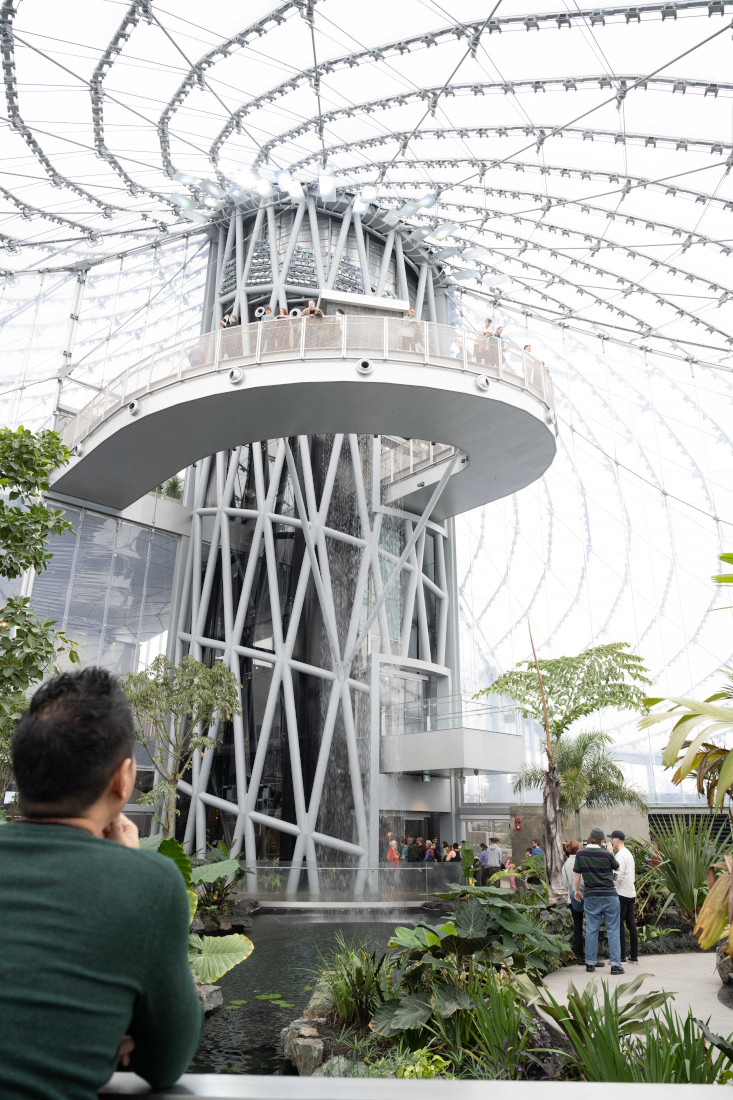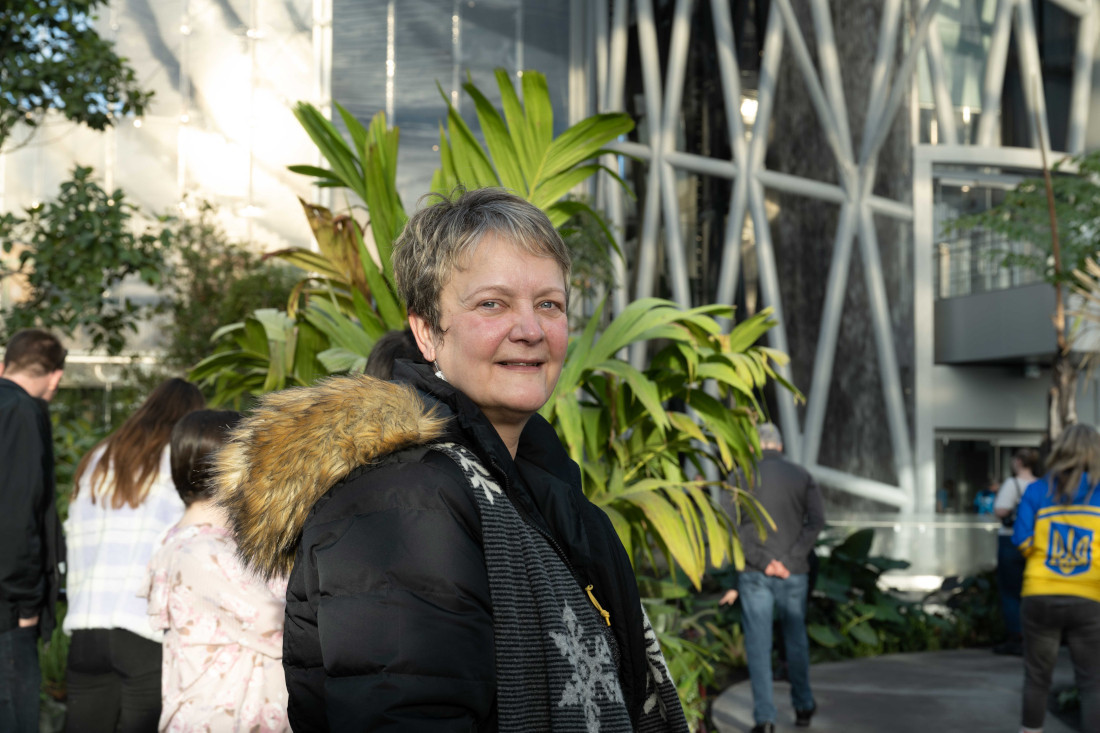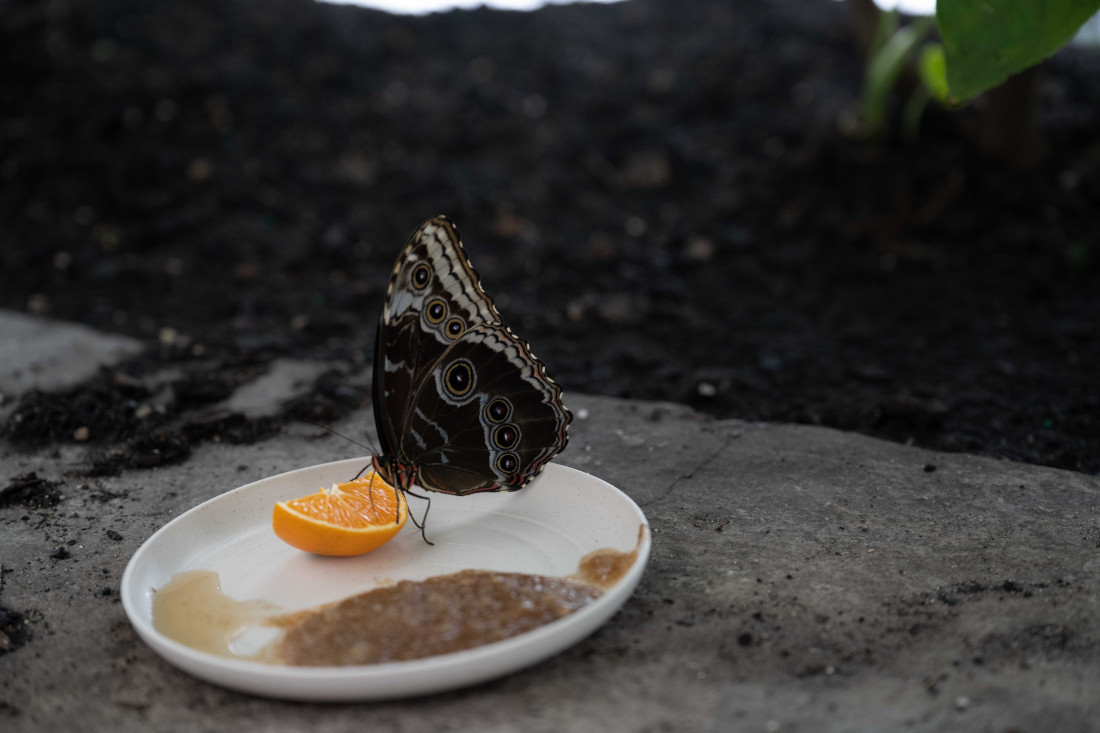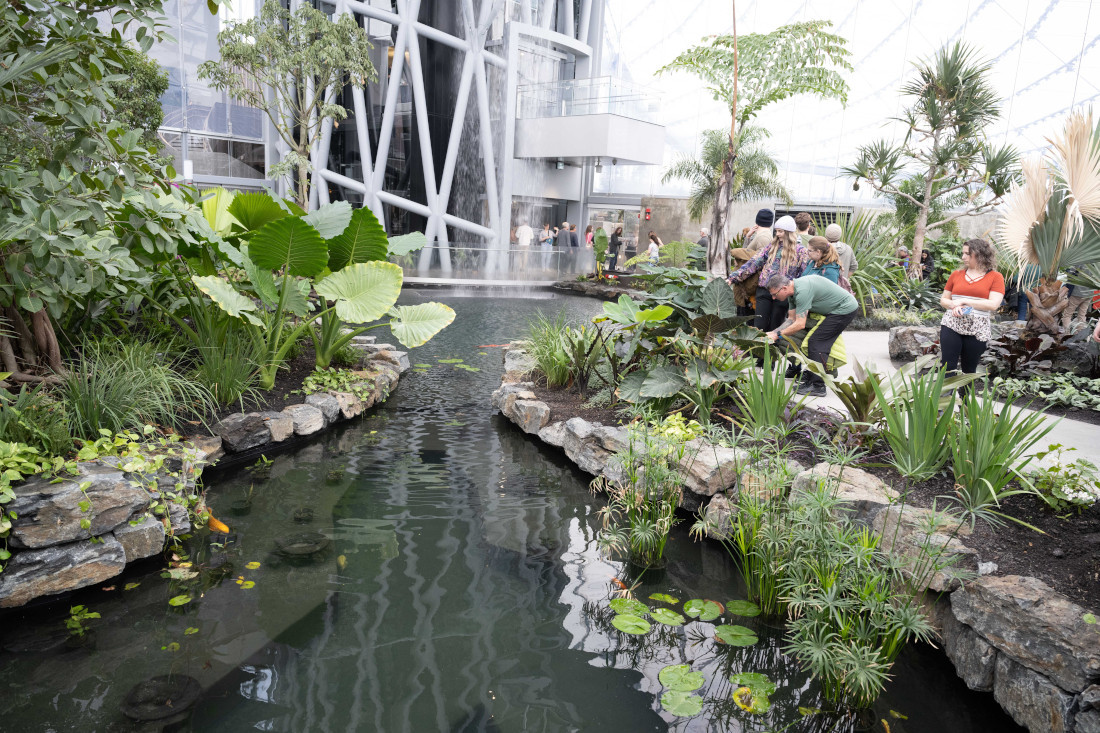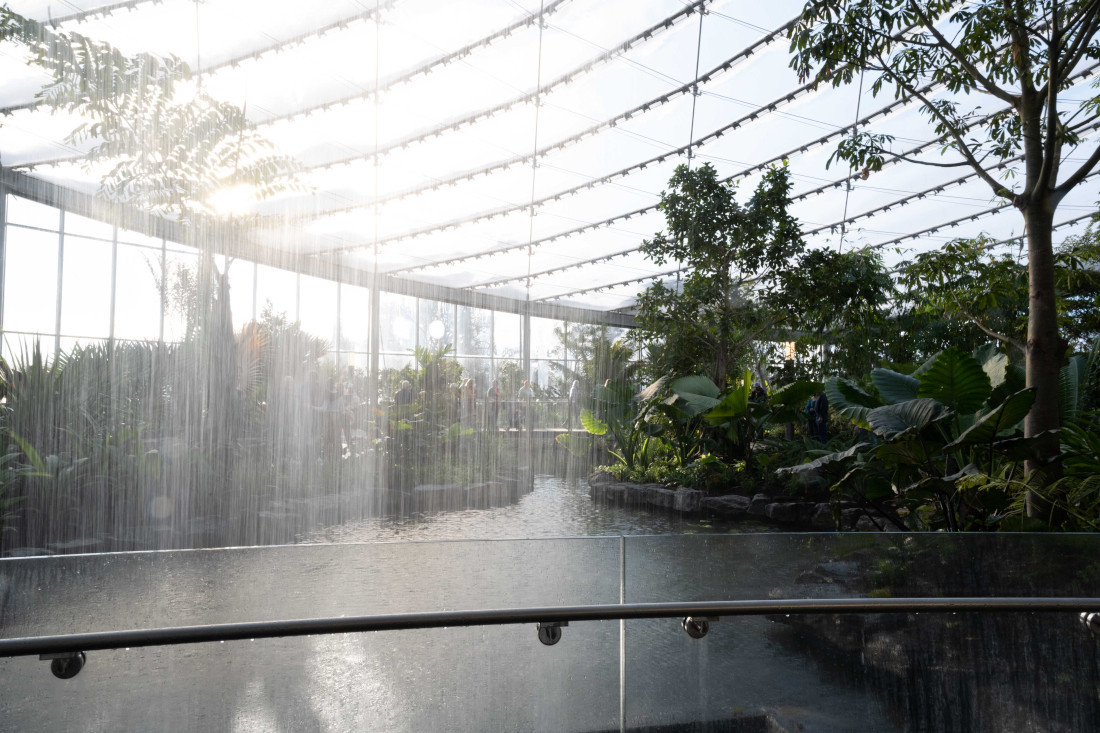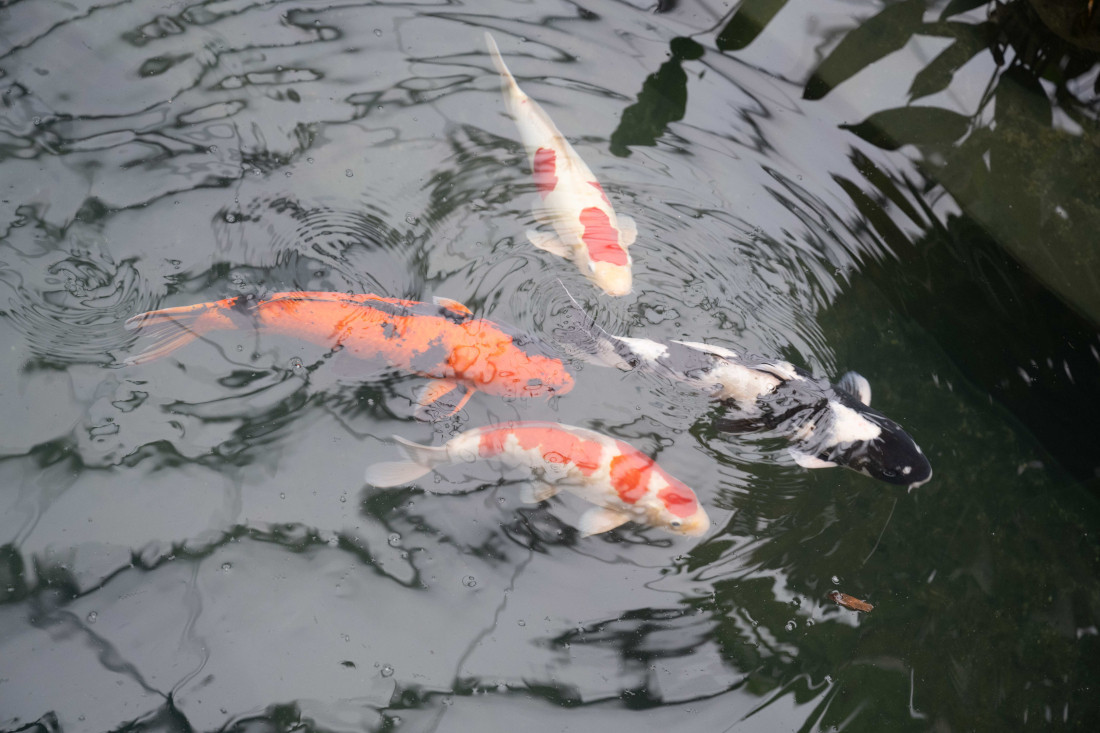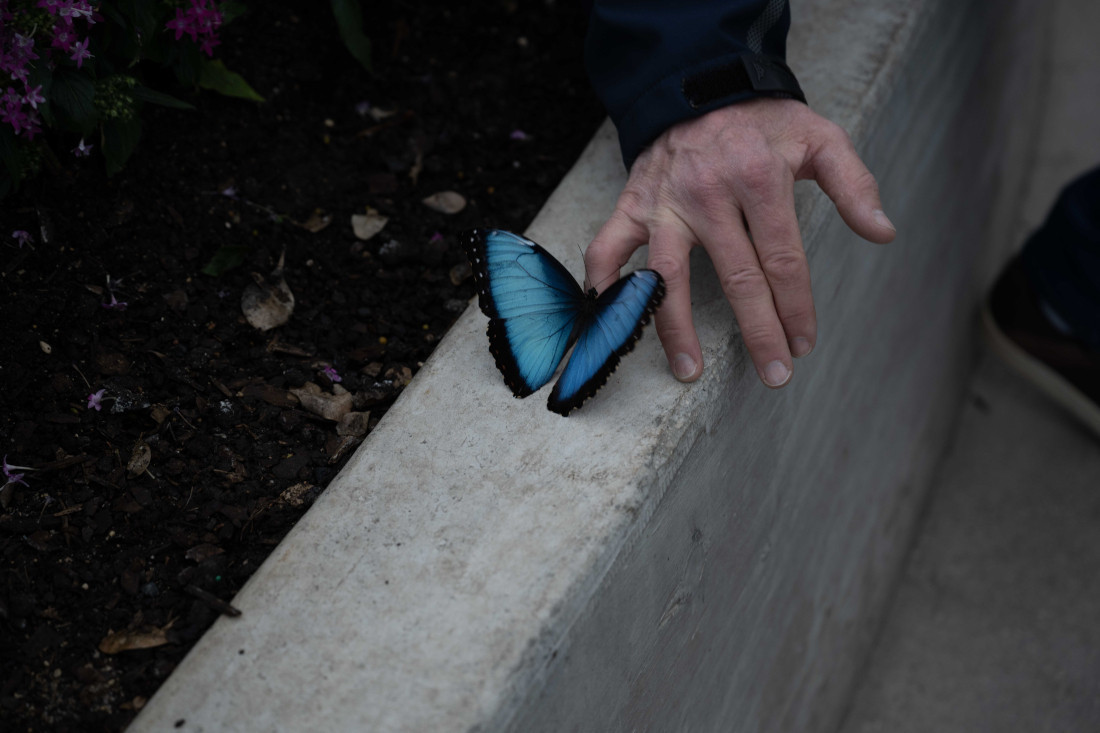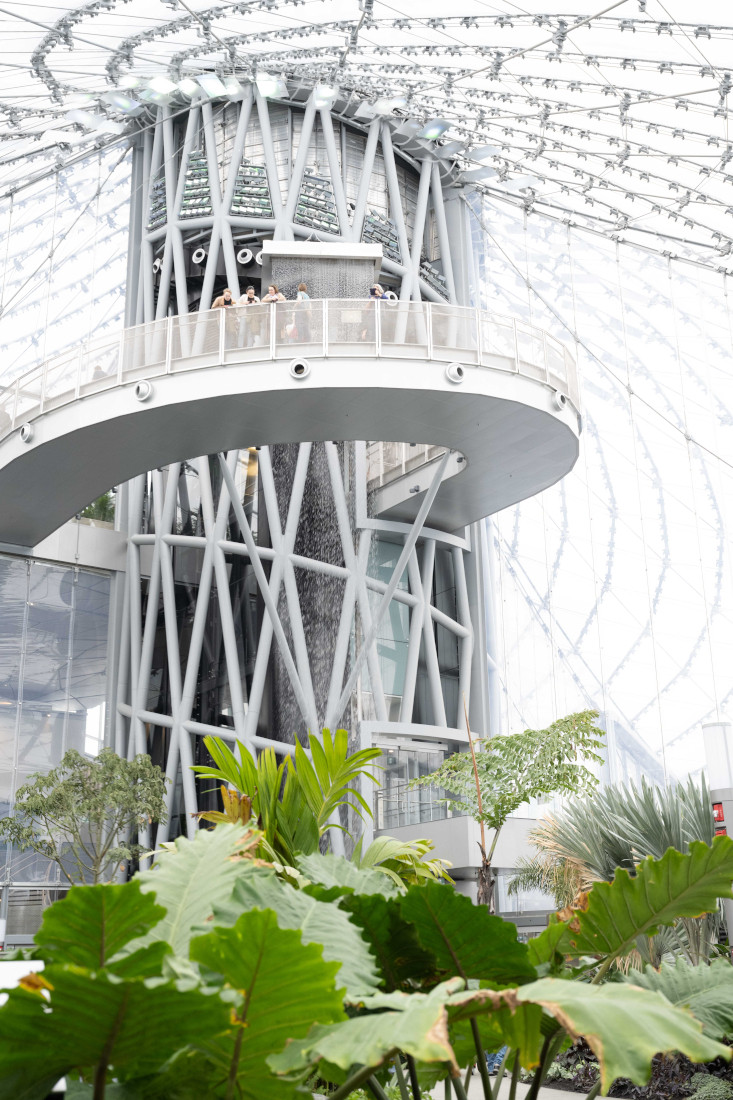Growing a new Leaf
A metamorphosis at Assiniboine Park
The line to purchase tickets to enter The Leaf is long. People took advantage of the winter break to visit the new conservatory at Assiniboine Park. For those whose travel plans were dashed by winter storms, The Leaf became a stop on reworked staycations.
The Leaf has four sections: the Hartley and Heather Richardson Tropical Biome, the Mediterranean Biome, the Shirley Richardson Butterfly Garden and the Babs Asper Display House, which featured a seasonal Christmas theme. The cold, dark days of Winnipeg’s winter made the tropical biome and the butterfly garden all the more appealing.
Lori Penner was a regular at the old Assiniboine Park Conservatory. She worked with the firm involved with architectural design and was at The Leaf during construction. During her first visit to the new centre since its completion, Penner says she’s happy with the result.
“It will be nice to see things once they’re really established,” she says. “It’s nice to walk without a jacket in the middle of winter.”
Unlike Penner, Melanie Browne did not visit the old conservatory. “It’s nice to get a break from winter,” Browne says during her second time at The Leaf. She and her partner have already purchased memberships for the year.
Browne brought a book to spend some time relaxing at The Leaf. She points out which plants have grown and changed since her first visit about two weeks earlier, and she’s excited to see which ones are blooming.
“I am noticing things the second time around that I didn’t notice the first time,” Browne says. “It’s constantly changing.”
The lineup for the elevator to the butterfly garden is long, and, according to Gary Frain, worth the wait. His favourite thing to do at The Leaf is “just sitting, watching the butterflies.”
“We were told when we came in that they were from Costa Rica and are very active today because of the sun and the heat,” Frain says of the butterflies. “They only live about four to six weeks.”
Frain came during the summer to see the outdoor gardens and was excited to see the indoor centre finally complete. He’s “very impressed” with The Leaf and says it’s a “great improvement” over the original conservatory space.
___
According to The Leaf, the following butterflies can be seen in the Shirley Richardson Butterfly Garden: Polydamas swallowtail, Forest giant owl, Blue-frosted banner, Tiger leafwing, Julia butterfly, Zebra longwing, Doris longwing, Tiger longwing, Hewitson’s longwing, Postman butterfly, Common blue morpho, Ruby-spotted swallowtail, Black swallowtail, Arcas cattleheart, Iphidamas cattleheart, Rusty-tipped page and Malachite. It is unlikely that people will be able to see all these species at the same time. The most famous and easiest to identify is the common blue morpho.
The blue morpho’s wingspan is five to eight inches, and it’s not really blue. They have microscopic scales on the back of their wings, which reflect light. The underside is brown with eye spots for camouflage. The females aren’t blue. They are brown and yellow. Their wings have been studied and inspired fabrics, iridescent paints and anti-counterfeit technologies.
The blue morpho’s life cycle lasts about 115 days. Once hatched into a butterfly, they live for two to four weeks.
At The Leaf, they can be seen landing on pieces of fruit that have been left out for them and drinking the juices. The blue morpho’s natural diet also includes the fluids of decomposing animals, tree sap, fungi and wet mud.
Published in Volume 77, Number 13 of The Uniter (January 5, 2023)

